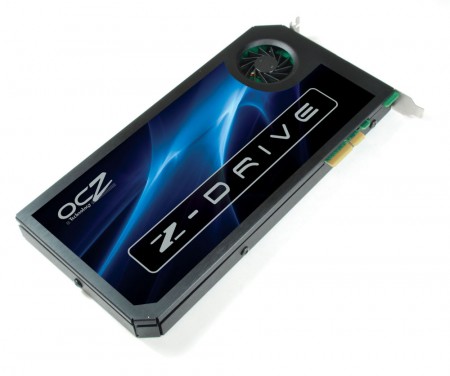
If you follow the blog you’ll know that I’ve touched on the subject of SSDs before. A quick primer for the uninitiated: an SSD (solid state drive) is a storage device that uses solid state memory (As in no moving parts, other examples include RAM and flash memory) and so it can access data much faster than the mechanical head/platter drives most people use now and with no moving parts, data loss due to mechanical failure is a thing of the past. The promise of SSD is huge and as they become commonplace they will no doubt revolutionize the way we work (think Photoshop swap disks that read and write @ 1400MB/s or computers that boot in 5 seconds). Because I work with such large raster files, swap disk performance in particular is a very big issue for me so I keep a close eye on the SSD market, waiting for the moment when the price to performance ratio hits the sweet spot. Right now most SSD technology is still on the pricey side and there are a few technical issues that are still being sorted out (write endurance supposedly being one of them) so I haven’t jumped in just yet. But as things change I will continue to post updates on the SSD situation.
For the first installment I thought I’d post on the very interesting OCZ Z-Drive. It’s insanely expensive right now, but as we all know, those prices drop pretty fast as the tech matures (remember $800 DVD writers?). The Z-Drive is basically 4 SSD drives in a RAID 0 array on a PCI-Express card. This is a novel concept; by using the PCI-Express bus OCZ has sidestepped the bottleneck of the SATA controllers allowing huge throughput in both directions. Boasting 700MB/s write speeds, the Z-Drive is certainly no slouch, but considering the price (they start at $1500!!) I’m holding out for more. I think the magic number for me would be 1000MB/s for around $500. This would make a perfect solution for Photoshop swap disks and other applications that require massive read/write throughput (video render disks etc.) and while it doesn’t make sense for me right now, it’s great to see this emerging technology headed in the right direction.



Great post!
very informative.
This is important and it’s very useful information. Thanks, good post as usual.
I just bought a new laptop and stayed with the old fashioned 7200RPM disk drive since I wasn’t prepared to spend hundreds more for a fraction of the space. Next computer though will be solid state, I can’t wait!
This should work great for audio as well. I can’t wait for these types of products to reach an affordable price.
I’m really anxious to see the improvements in load speeds, etc.
yeah, will be big for multi-track audio for sure. It’s sort of crazy that we’ve had to wait so long for this, everything else has improved so much but hard drives have stayed essentially the same for years.
This is not a novel concept as you stated, Scott. The IOFusion drive is way older (even the price is/was higher) and does the same thing.
And 1.5 (1.4) GB/s read (write) speed is in fact incredibly fast.
Michael-
the idea of SSDs RAIDed on a PCIx card is in fact a novel concept, it’s only been introduced in the past year or so. The Fusion-IO IOxtreme is only 80Gb for $800 so I didn’t include it as a viable option. Also, I wasn’t able to find it for sale anywhere.
I’ve been keeping my eye on SSDs as well. Super stoked to see where these things go. I’m continually impressed with my iphone’s ability to take a beating again and again with the SSD at its core. Keep the posts coming on this topic!
Scott, I didn’t mean the ioXtreme – this seems to be kiddy crap for gamers (also the price suggests this). If you need REAL performance, try the ioDrive Duo. And there you go with something similar to RAIDed SSDs, just for the cost of a small Mercedes 😉
SSD’s are terrible at random 4KB write, currently they might work well as a Photoshop swap drive but not as a main system with heavy disk usage scenario.
Make sure you look at independent review and opinions when buying SSD, also don’t forget to check the IOPS numbers which are crucial to what you will realy get from particular drive (most vendors don’t even specify those numbers in tech sheets for their products).
PS. I have an SSD and I’m very disappointed with it cause (shame on me 🙂 I believed I will get the performance the manufacturer claimed at their site while I actually get trasfer rates at about 30-50% !!!. Leasson learned ;(
Remeber about the IOPS and be carefull.